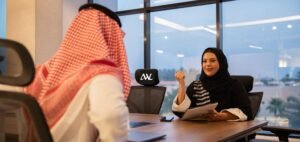As the world grapples with climate, clean energy, and living green, a corner of the globe is writing the sustainability narrative in big letters. Middle Eastern sustainability is no longer a promise on the horizon—it’s a hard, measurable reality that’s reshaping city skylines, rewriting economic models, and powering a strong, visionary public.
By 2025, the Middle East is a leader in the worldwide sustainability revolution. From green banking and net-zero cities to desert agriculture and international environmental partnerships, this region is indeed building a greener future—quietly, as this region has been renowned for deserts and petroleum wealth for decades.
A Shift in the Sands: The Middle East Reimagines Sustainability
Evolution of Sustainability in the Middle East did not come overnight. Decades passed to make it happen with smart policy, visionary governance, and a growing ambition to confront environmentalism. The United Arab Emirates, Saudi Arabia, Qatar, Egypt, and Jordan, among many others, embarked on green revolutions driven by investment in renewable energy, ESG mandates, and green innovation.
At the center of this change is a vision to future-proof economies. The Middle East’s fossil fuel dependence once seemed to be at odds with the world’s sustainability ambitions. But today, Middle Eastern nations are using their economic and geopolitical clout to power green revolutions. And 2025 is the turning point in how these nations are being assessed—not just as energy producers, but as sustainability champions.
Net-Zero Cities and Revolutions in Renewable Energy
Perhaps the most heard-about Middle East Sustainability story is that of net-zero cities. Take the example of Masdar City in the UAE—a plan which was otherwise considered utopian. Now, in 2025, it is a realised city which operates on solar energy, walking, and deployment of smart technology to reduce wastage and usage.
NEOM in Saudi Arabia is also another milestone for life to be. And with “The Line,” it’s presenting a car-free, zero-carbon city model along 170 km. In extending the boundaries of city design, the Middle East is creating new world records.
Meanwhile, renewable energy is being met with record investment. Saudi Vision 2030 has ambitions to derive 50% of its power from renewable energy. The UAE has pledged to net-zero by 2050 and is already opening up a lot of solar and wind farms. The Mohammed bin Rashid Al Maktoum Solar Park is, as of 2025, one of the world’s largest and a source of regional ingenuity.
Youth Engagement and Green Innovation
The most critical element of Middle Eastern Sustainability today is dependency upon a young and innovative educated population. Across the entire Middle East, there are institutions of higher education that are incorporating climate science, green engineering, and sustainability policy into degrees. Younger entrepreneurs are starting cleantech ventures and leveraging solutions specifically designed to take advantage of the challenges and opportunities ranging from water scarcity to scorching heat.
Doha, Abu Dhabi, and Riyadh all have innovation clusters tantalizing green entrepreneurs with green grants, incubators, and global competitions. More than 60% of regional startups have at least one alignment by 2025 with one of the UN’s Sustainable Development Goals (SDGs).
This tide of creativity, passion, and purpose is setting sustainability on the agenda—not as a top-down edict, but as a bottom-up movement spearheaded by the next generation.
Climate Challenges Become Opportunities
Let’s get real: no Middle Eastern sustainability without issues. Desertification, water scarcity, increasing temperatures, and fossil fuel dependency are all genuine issues. But the Middle East’s response to these issues is changing at a rapid rate.
Solar-powered desalination units are converting sea water into drinkable freshwater using minimal environmental consequences. Kuwaiti rooftop gardens and Oman’s hydroponic crop produce vegetables using 90% less water compared to soil-cultivated farms. Smart irrigation is revolutionizing Jordanian farms, converting deserts into greener agricultural crops.
They are not just struggling to survive climate change, but to flourish in it, and using science and technology to inform a new green century of ecological sustainability.
Regional Cooperation and Policy Reform
Regional cooperation is at the heart of Middle Eastern Sustainability. So far, more collaborative agreements on the environment have been signed in 2025 by Gulf nations, Levant nations, and North African nations. These range from cooperative carbon market arrangements to collaborative research on climate-resilient infrastructure.
The League of Arab States has put its green agenda on the fast track, demanding standardized green building codes, waste reduction, and emission cuts. Pan-border initiatives such as the Middle East Green Initiative (MGI) and the Red Sea Coral Reef Preservation Program illustrate how environmental diplomacy is becoming a cornerstone of regional integration.
Policy reform is also required. National governments launched green procurement policies, encouraged sustainable lifestyles and made environmental impact analysis obligatory in key industries. Publicly listed companies in the majority of the Middle East stock markets now have ESG disclosure obligations, a huge step towards corporate sustainability regulation.
Sustainability in the Middle East: Cultural and Spiritual Roots
What is intriguing is that Middle Eastern Sustainability is not new—it has religious and cultural roots that are centuries long. Islam, which pervades the lives of millions here, demands responsibility for the world, or khalifa. That nature spirituality is being revived in contemporary contexts and is influencing sustainable practices in architecture, agriculture, and life itself.
The green mosques are made of local materials and powered by green energy. Faith campaigns for climate consciousness are promoting beneficial consumption and conservation. The Middle East is embracing sustainability in society by fusing tradition with technology.
Sustainability in the Middle East Education and Awareness Drive
Learning is the second abutment of Middle East Sustainability. At a national level, Sustainability literacy is being integrated into school curricula. By 2025, UAE, Bahrain, and Qatar students are introduced to the environment at an early age through outdoor education and inquiry learning.
Public campaigns are ubiquitous—refined billboards promoting recycling to clean-up campaigns by communities. Internet stars and internet websites are pushing the voice of environmental stewardship to millions. This is generating a green-conscious public which buys into and implements green policies.
Apart from this, government-sponsored programs are offering online certifications, green job training applicants, and up-skilling professionals for energy auditing, green buildings, and circular economy competencies.
The Economic Driver of the Green Transition
Economics is a humongous driver of Sustainability in the Middle East. Sovereign wealth funds like Saudi Arabia’s Public Investment Fund (PIF) and UAE’s Mubadala are investing billions of dollars in sustainable assets. Green bonds and sukuks (Islamic financial instruments) are financing renewable energy projects as well as infrastructure development.
Green tourism is also gaining momentum. Oman resorts, Jordan eco-lodges and Egyptian heritage sites are being developed sustainably, delivering authentic experiences on the basis of conservation. The intersection of tourism and sustainability is generating new income streams while conserving natural and cultural assets.
In 2025, the Middle East is showing that the green economy is not only viable—but profitable.
Global Leadership and the Road Ahead
By bidding on and hosting global events like COP28 in the UAE and actively engaging in UN climate summits, Middle Eastern stakeholders are climbing to the top as global leaders. They’re not just players in the sustainability conversation—they’re leading the charge.
The Middle Eastern Sustainability future is one of work and optimism. Aims must be achieved, greenwashing must be avoided, and the public must be protected at all costs. But the pace cannot be sacrificed. The Middle East is building a model for how hot, energy-thirsty nations can be green leaders in environmental sustainability and innovation.
2025 is not the end, but a milestone—a proof point that transformation is not only desired, but achievable, even in the most unfriendly environments.
Conclusion
In every direction—solar farms and smart cities, green education and green finance—Middle East Sustainability is picking up speed. It’s a story of vision, persistence, and change. And while the world watches, this region keeps dispelling myths, creating new concepts, and charting a sustainable 2030 and beyond.




